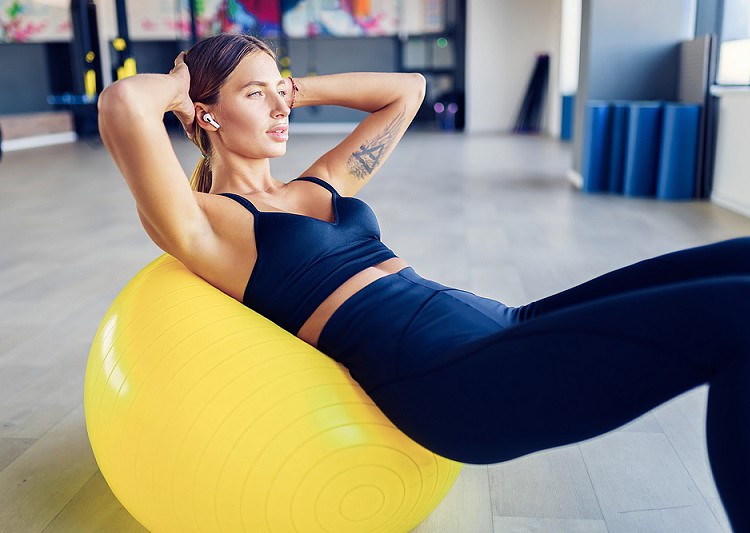Exercise balls are one of the most underrated workout equipment. Whether you are doing yoga, Pilates, or your daily dose of cardio or stretch, an exercise ball can be used to improve any type of workout.
You can use them to help strengthen your core, improve your posture, increase flexibility, heal from an injury, and more. They also come in a variety of sizes and weights, depending upon their purpose and usage.
Are you wondering if an exercise ball can help improve your crunches and effectively engage all the right muscles? Yes, it can.
An exercise ball is a very versatile piece of equipment. With the right exercise and posture, even a classic exercise like crunches can be taken to another level.
Keep reading to learn how you can perform crunches on an exercise ball effectively, the best techniques to up your crunches game, and the benefits of doing it on an exercise ball.
Table of Contents
What Are Crunches and Are They Effective?
To perform crunches, you lay down on the floor, bend your knees, tighten your core abdominal muscles, and lift your head and torso up toward your knees.
Crunches are a very popular form of exercise, as they are known to help achieve a flatter stomach and strengthen the abdominal muscles.
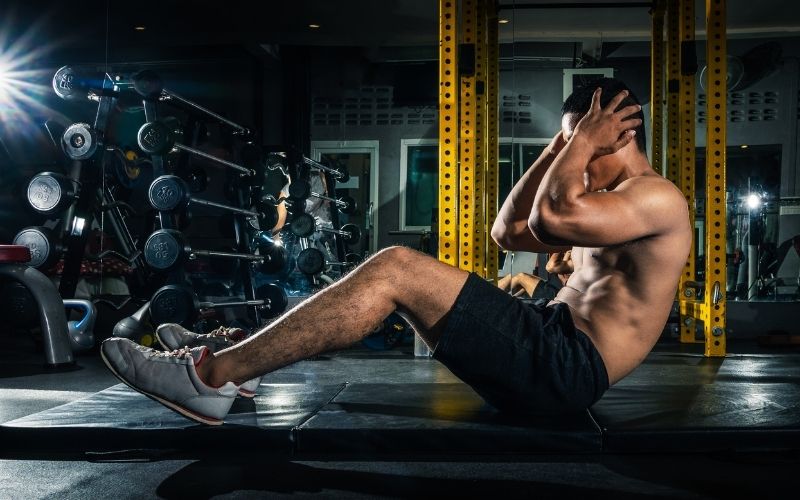
Crunches can be of different types, depending on the technique and movement of your body parts, such as bicycle crunches, reverse crunches, crunch twists, standing crunches, etc.
Apart from helping get those washboard abs, crunches are also effective in building muscles, improving posture, and strengthening your core.
However, crunches are only effective if you do them in the proper manner.
Are Crunches on an Exercise Ball Effective?
Do crunches on exercise ball work? Yes, they absolutely do!
Studies have shown that compared to training machines and expensive ab crunch machines, doing crunches on exercise balls provides better results.
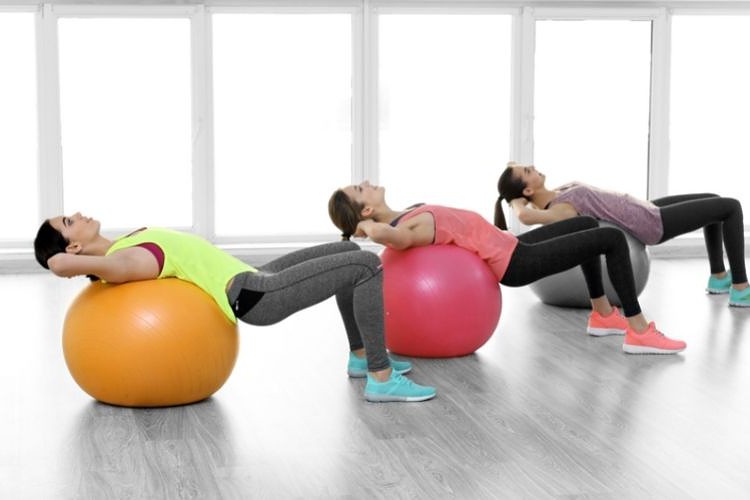
Crunches on an exercise ball are advocated as a better recourse. They increase the motor control of the core muscles, put less stress on the lower back region including the hips, and enhance stability and balance.
It is a low-intensity alternative to conventional crunches, so it allows greater opportunity to improve your posture, balance, and joint pressure without exerting too much pressure on your muscles.
And, because an exercise ball provides an unstable surface, it requires you to activate your abdominal muscles much more than you would when doing regular crunches.
So, if you want a more intense ab workout session where you can engage your abdominal area, transverse abs, and obliques, you want to work on your core muscles more intensely.
In this case, doing crunches on an exercise ball is an effective option.
What Muscles Do Crunches on an Exercise Ball Work?
When you do crunches on an exercise ball, you work on multiple important muscles. The targeted muscles can be categorized into primary muscles and secondary muscles.
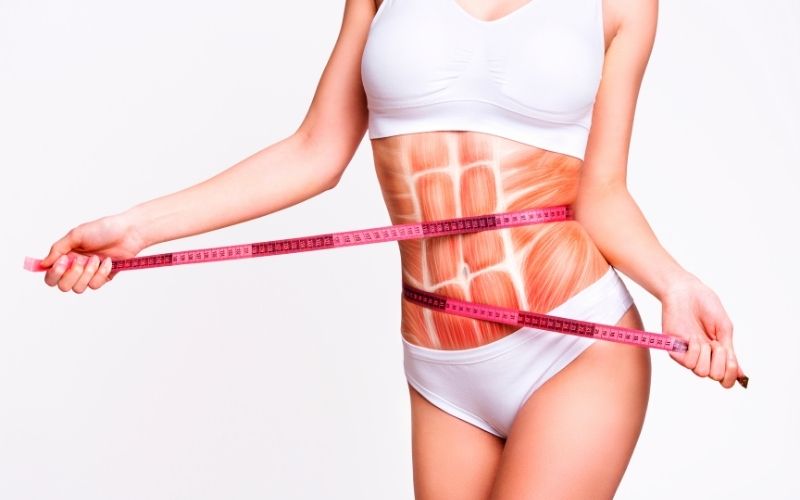
Primary Muscles
The primary muscles include the abdominal muscles, which are the chiefly targeted group of muscles. This group includes the rectus abdominis, the obliques, and the transverse abdominis.
Rectus Abdominis
The rectus abdominis, most commonly known as “abs,” is the group of muscles that lies directly under the abdominal skin and are responsible for giving you the four-pack or six-pack look.
Obliques
This is the innermost layer in the stomach that is also responsible for the proper digestion of food. Targeting the obliques helps improve spinal movement as well as twists the body to engage your core better.
Transversus Abdominis
This is the deepest layer and a crucial core muscle that is responsible for maintaining good body posture.
Secondary Muscles
The secondary muscle groups that are engaged when performing crunches on an exercise ball include: posterior deltoids, gluteus minimus, erector spinae, and other essential muscles.
These muscles, in the shoulders, hips, and thighs, stabilize the body and bring it in an optimal position while exercising.
How to Do Abdominal Crunches on an Exercise Ball?
Doing abdominal crunches on an exercise ball will only be effective if you do it properly. You are not only engaging your abs but also your hips, legs, and entire lower body.
Therefore, if your posture is incorrect, or if you do too much or too little of the exercise, you put yourself at risk of injuries, muscle pull, and other unexpected and unwanted consequences.
Here are simple steps you can follow to perform abdominal crunches on an exercise ball effectively:
- Sit straight on the ball with your knees at a 90-degree angle to your hips and knees. Ensure that your body weight is evenly distributed.
- Steadily walk your feet out as you rest the lower portion of your back on the ball. Support the back of your head with your hands. Stabilize your back properly on the ball to avoid putting any pressure on your back’s upper portion.
- Your feet should be shoulder-width apart, your elbows wide and out, and your fingers loose.
- Lift your head and torso up and down with the support of your hands while you engage your ab muscles.
- Exhale as you lift your head, and inhale when you go down.
- Keep your chin lifted slightly up so as to avoid putting any pressure on it.
Crunches on an Exercise Ball vs. on the Floor: Which Is Better?
If you’re wondering whether doing crunches on an exercise ball is worth the effort, here’s a quick comparison between doing crunches on an exercise ball vs. doing crunches on the floor.
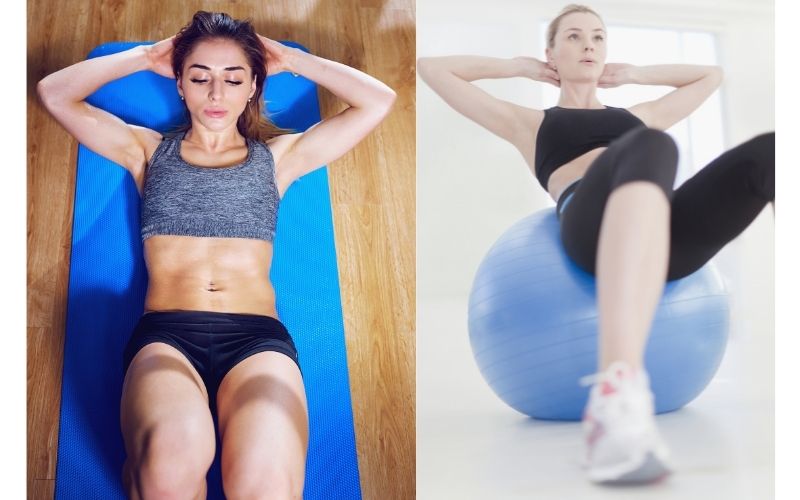
- Although doing crunches on an exercise ball is more challenging compared to doing it on the floor, it’s a much better option if you want to avoid hurting your lower back.
- Exercise balls are made of elastic and flexible materials that offer more movement while exercising. However, this also means that you have to perfectly stabilize your body on the ball to prevent falling off of it.
- If the ball is bigger or smaller than the required size, you may end up overstretching or putting pressure on the wrong muscles.
- It is easier to perform lifting motions on the ball than on the floor.
The effectiveness of this exercise depends on the objective of incorporating crunches into your workout routine and your goals. That’s what will help you decide which is better, doing it with a ball or without one.
Conclusion
Crunches are an intensive workout form that can do a lot for your body in terms of strength, balance, appearance, and overall fitness.
Do not mistake crunches as a form of cardio that will help in reducing belly fat. Crunches are predominantly responsible for training your abdominal muscles and improving stability.
So, if you’re considering using an exercise ball for performing crunches, make sure you get the right size.
And do your research on the correct form of performing crunches on an exercise ball to gain more benefits and avoid any injury.

My name is Vance, and I am the owner of To Ergonomics. Our mission is to improve your workflow by helping you create a supportive and welcoming environment. We hope that you’ll find what you’re looking for while you’re here.

